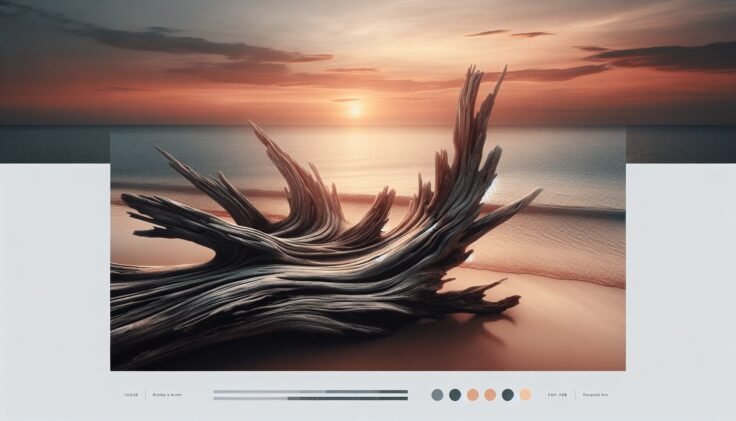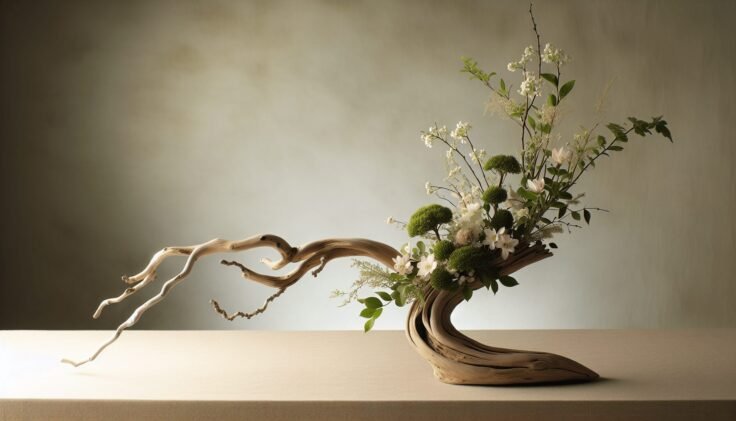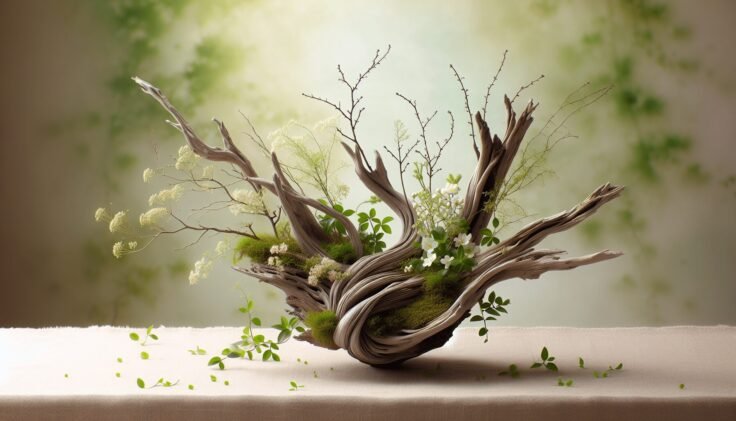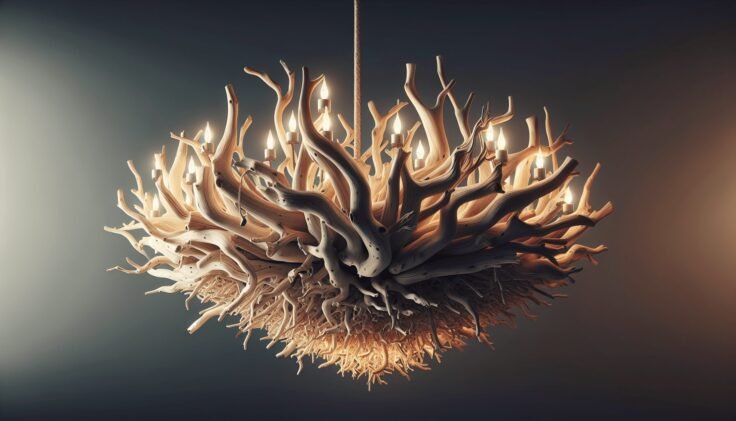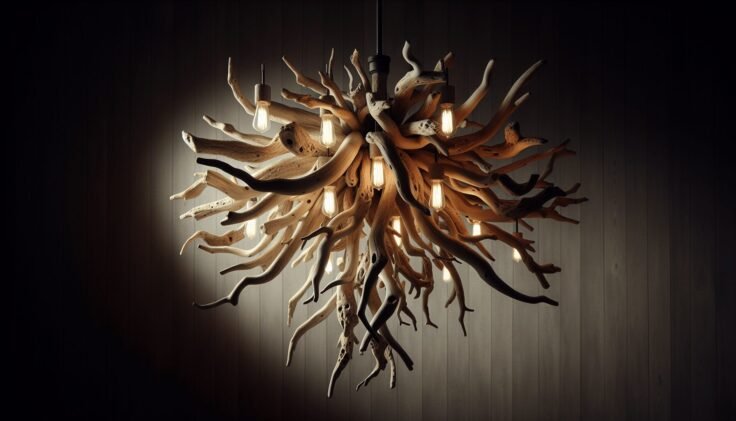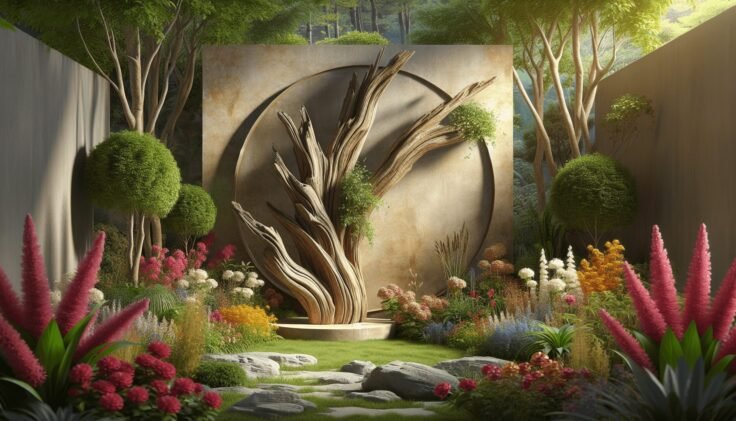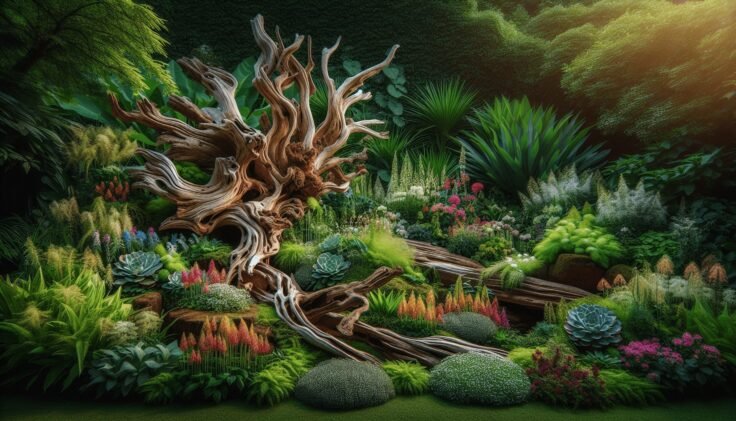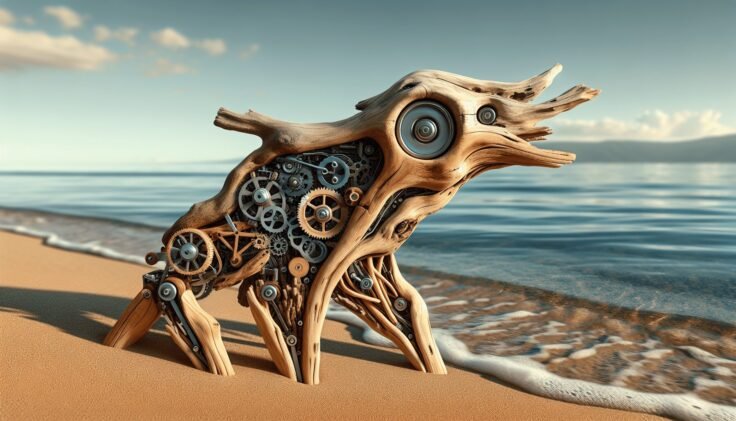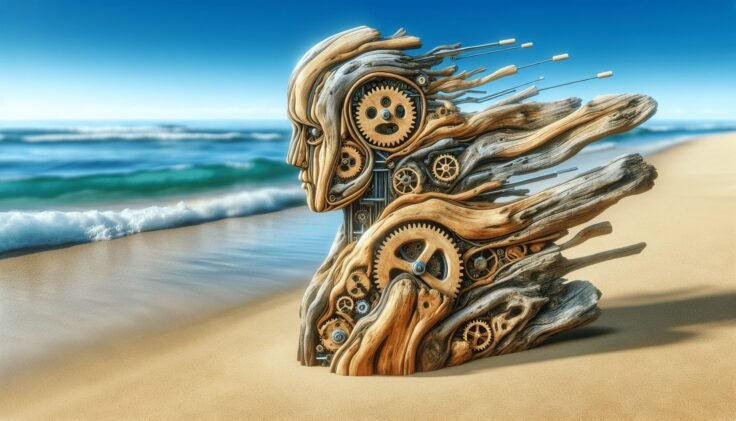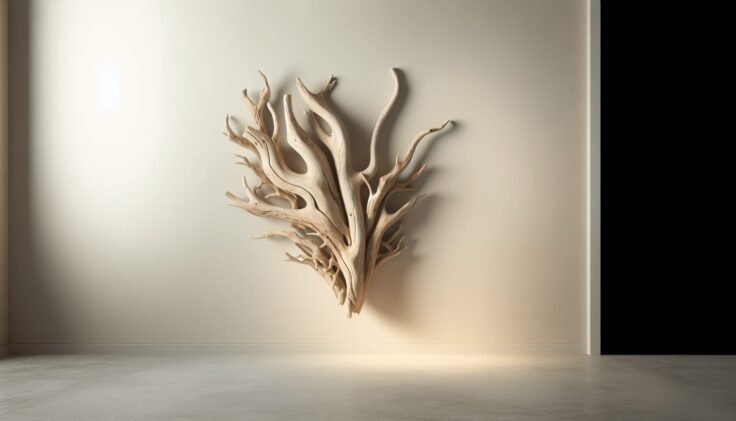Have you ever wondered how you can transform an ordinary piece of wood into a stunning lighting fixture? If so, you’re about to discover the magic of driftwood lighting. Combining natural beauty with creativity, driftwood lighting not only brightens your space but also brings a touch of nature into your home. In this detailed guide, we’ll explore everything you need to know about driftwood lighting, from sourcing your materials to choosing the perfect light.

What is Driftwood Lighting?
Driftwood lighting is a unique form of art that involves using pieces of driftwood to create functional and aesthetically pleasing lighting fixtures. Driftwood, primarily found on beaches, is wood that has been washed onto the shore by the tide, waves, or wind. Over time, it develops a distinct weathered look that makes each piece unique.
The Appeal of Driftwood
The charm of driftwood lies in its organic shapes and textures. Each piece tells a story of its journey through the water. Its natural and rustic appeal makes it an excellent choice for crafting and interior design. Driftwood lighting combines this natural beauty with functionality, offering a sustainable lighting solution that is both eco-friendly and stylish.
Sourcing Driftwood for Your Projects
Finding the right driftwood is the first step in creating driftwood lighting. This process involves careful selection and sometimes, a little bit of luck.
Where to Find Driftwood
Finding driftwood might be as simple as taking a walk along your local beach. However, not every piece you find will be suitable for a lighting project. Look for pieces that are robust, with interesting shapes or textures. If beaches aren’t accessible, driftwood can also be sourced from craft stores or online marketplaces, but ensure that these sources offer environmentally responsibly harvested products.
Tips for Selecting the Right Pieces
When selecting driftwood, consider the size, shape, and condition. For smaller projects like table lamps, medium-sized pieces with a stable base work well. For chandeliers or larger lighting installations, you may need several smaller pieces that can be intricately combined. Always make sure the driftwood you select is dry and free from rot or pests.
Preparing Driftwood for Lighting Projects
Once you’ve selected your driftwood, it’s important to prepare it properly for your lighting project. Proper preparation ensures your driftwood is both safe and beautiful.
Cleaning and Treating Driftwood
Clean the driftwood thoroughly to remove any sand, salt, or debris. This can be done by scrubbing it with a brush and warm water. Allow it to dry completely, preferably in the sun. After cleaning, treat the wood with a mix of water and vinegar to sanitize and ensure it’s bug-free. Let it dry again before proceeding.
Finishing the Wood
You can leave the wood in its natural state to maintain its rustic charm, or apply a finish to enhance its appearance and protect it. Consider using linseed oil or a clear varnish to bring out the wood’s natural tones and give it a subtle sheen.
Types of Driftwood Lighting
There are several types of driftwood lighting that you can incorporate into your home, each offering a different aesthetic and practical function.
Driftwood Table Lamps
A driftwood table lamp can be a show-stopping centerpiece in a living room or bedroom. Create a base with a solid piece of driftwood and choose a lampshade that complements the wood’s natural texture. Consider adding a dimmer switch for adjustable lighting.
Driftwood Floor Lamps
For a more substantial piece, a driftwood floor lamp can add drama and elegance to a room. Use taller pieces, or stack and secure smaller pieces to form an interesting vertical structure. Ensure the base is stable enough to support the lamp.
Driftwood Chandeliers
Chandeliers made from driftwood can transform a space into a coastal retreat. Use multiple pieces to create layers and depth, and consider integrating LED lights for a modern touch. This type of lighting works well in dining rooms or entryways where it can be appreciated from multiple angles.
Driftwood Pendant Lights
Ideal for kitchens or over bars, driftwood pendant lights offer focused lighting while showcasing the wood’s beauty. They can be crafted using smaller pieces that are suspended from the ceiling using durable cords or chains.

Designing and Assembling Driftwood Lighting
Now comes the fun part—designing and building your driftwood lighting fixture.
Planning Your Design
Before assembling, sketch your design. Consider the space where the light will hang and any structural elements that need to be included, such as wiring channels or supports. This will prevent mistakes and ensure a balanced, well-composed piece.
Assembling Your Driftwood Light
Use tools like a drill, screws, and strong adhesive to secure the driftwood into place. If your design includes multiple pieces, test-fit them before final assembly. Ensure all wiring is safely contained and complies with electrical standards.
Wiring and Safety Considerations
Safety should be a top priority when creating any lighting fixture. Electrical work should be approached with caution and professionalism.
Basic Electrical Setup
If you’re comfortable with basic wiring, start by running the electrical cord through the drilled holes in your driftwood pieces. Add a socket in the appropriate place and connect the wires. Always use components rated for the voltage and wattage you intend to use.
Hiring a Professional
If you’re not confident working with electricity, consider hiring an electrician. They can ensure your fixture is safe and functions correctly. This is especially crucial for larger fixtures like chandeliers or pendant lights that need ceiling installations.
Incorporating Driftwood Lighting into Your Home
Once your driftwood lighting is complete, it’s time to incorporate it into your living space.
Coordinating with Decor
Consider the current style of your room when choosing and placing your driftwood lighting. Driftwood often pairs well with nautical, rustic, or minimalist decor. Complement it with natural materials like linen, cotton, or jute in your other design elements.
Creating Focal Points
Use driftwood lighting to create a focal point in a room. Whether it’s a dramatic chandelier or a quaint table lamp, let the natural textures of driftwood draw the eye and generate conversation.
Caring for Your Driftwood Lighting
Maintaining your driftwood lighting will ensure it remains a beautiful part of your home for years to come.
Regular Cleaning
Dust your driftwood lighting regularly using a soft cloth or a gentle brush. For deeper cleaning, slightly dampen a cloth with water and gently wipe the wood. Avoid soaking or using abrasive tools that could damage the finish.
Seasonal Inspections
Check your fixture periodically for any loose pieces or wear on the electrical components. Ensure that everything remains sturdy and securely fastened, particularly if your fixture is in a high-traffic area.
Benefits of Driftwood Lighting
Driftwood lighting isn’t just about aesthetics. It offers several practical and environmental benefits.
Eco-Friendly Choice
Using driftwood is a sustainable choice. It repurposes wood that has already been naturally weathered without additional processing or deforestation.
Unique and Customizable
Each piece of driftwood is unique, allowing you to create one-of-a-kind lighting that reflects your personal style. You can customize designs to suit specific room themes or color palettes.
Atmosphere Enhancement
Driftwood lighting adds warmth and coziness to any environment. Its natural tones harmonize with other elements in the room, offering a soft, inviting ambiance.
Challenges and Solutions
Despite its beauty, working with driftwood has its challenges, but these can be overcome with some know-how.
Uneven Shapes and Sizes
Driftwood comes in all sorts of shapes and sizes, which can make construction tricky. Choose pieces that have naturally flat surfaces as bases or use power tools to even out certain areas for stability.
Handling Fragile Pieces
Some driftwood can be fragile. Reinforce joints with adhesive or screws, but be careful not to split the wood. Gentle handling during both construction and maintenance will preserve its integrity.
Balancing Aesthetics and Function
Striking a balance between beauty and practicality can be challenging. Consider both the artistic and functional sides of your design, ensuring it not only looks good but also serves its purpose effectively.
Conclusion: Illuminating Your World
Driftwood lighting offers a unique blend of nature and design, allowing you to express creativity while making an eco-friendly choice. Whether you’re looking to add a touch of rustic charm or want a dramatic centerpiece, driftwood lighting can cater to various styles and preferences. Remember to source responsibly, handle with care, and enjoy the process of transforming driftwood into something truly spectacular. Embrace the imperfections and let each piece tell its own story as it lights up your space.

